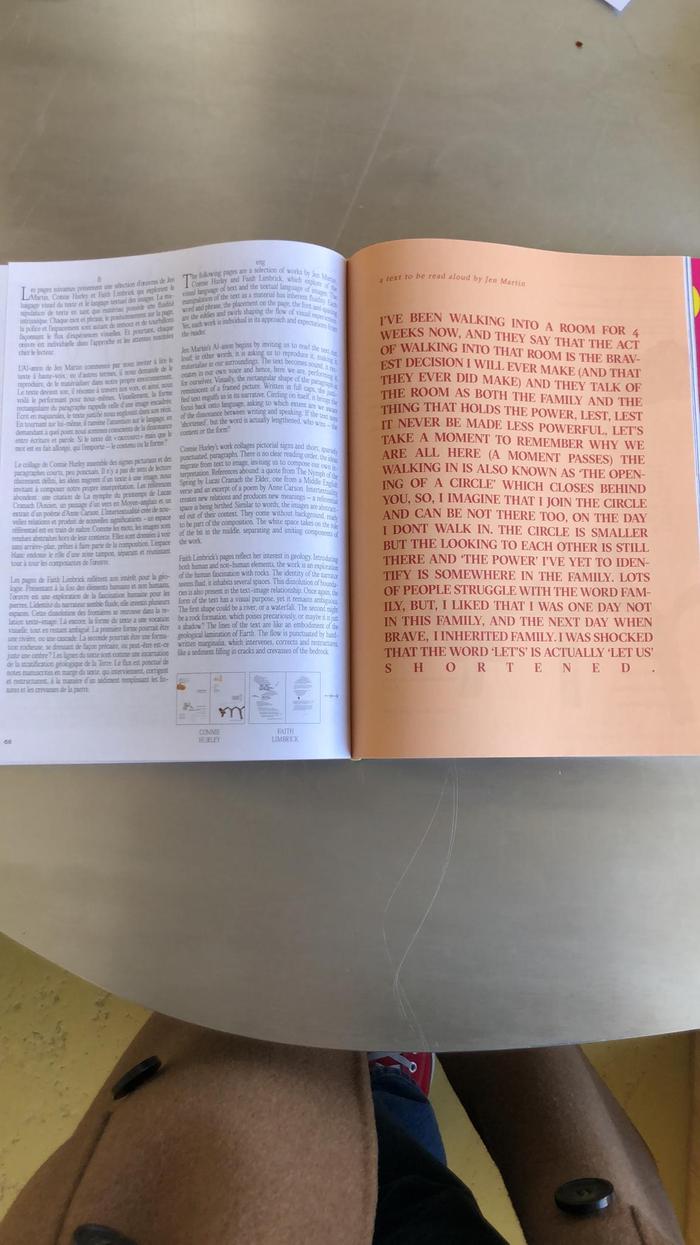Édition HIT
Édition HIT
In 2020, Anne Minazio invited me to present artists from Embassy as part of the édition HIT. In response to the invitation, I curated 3 double-spreads with works by Jen Martin, Connie Hurley and Faith Limbrick on the subject of image-text.




“The following pages are a selection of works by Jen Martin, Connie Hurley and Faith Limbrick. The presented works are an exploration of the visual language of text and the textual language of images. The manipulation of the text as a material has inherent fluidity. Each word and phrase, the placement on the page, the font and spacing are the eddies and swirls shaping the flow of visual experiences. Yet, each work is individual in its approach and expectations from the reader.Jen Martin’s Al-anon begins by inviting us to read the text out loud – in other words, it is asking us to reproduce it, making it materialise in our surroundings. The text becomes sound, it resonates in our own voice and hence, here we are, performing it for ourselves. Visually, the rectangular shape of the paragraph is reminiscent of a framed picture. Written in full caps, the justified text engulfs us in its narrative. Circling on itself, it brings the focus back onto language, asking to which extent are we aware of the dissonance between writing and speaking. If the text says ‘shortened’, but the word is actually lengthened, who wins – the form or the content?
Connie Hurley’s work collages pictorial signs and short, sparsely punctuated, paragraphs. There is no reading order, the ideas migrate from text to image, inviting us to compose our own interpretation. References abound: a quote from The Nymph of the Spring by Lucas Cranach the Elder, one from a Middle English verse and an excerpt of a poem by Anne Carson. Intertextuality creates new relations and produces new meanings – a new referential space is being birthed. Similarly to words, the images are abstracted out of their context. They come without background, ready to be part of the composition. The white space takes on the role of the bit in the middle, separating and uniting components of the work.
Faith Limbrick’s pages reflect her interest in geology, water and elements of darkness. Introducing both human and non-human elements, the work is an exploration of the human fascination with rocks. The identity of the narrator seems fluid, it inhabits several spaces. This dissolution of boundaries is also present in the text-image relationship. Once again, the form of the text has a visual purpose, yet it remains ambiguous. The first shape could be a river, or a waterfall. The second might be a rock formation, which poises precariously, or maybe it is just a shadow? The lines of the text are like an embodiment of the geological lamination of Earth. The flow is punctuated by handwritten marginalia, which intervenes, corrects and restructures, like a sediment filling in cracks and crevasses of the bedrock.”